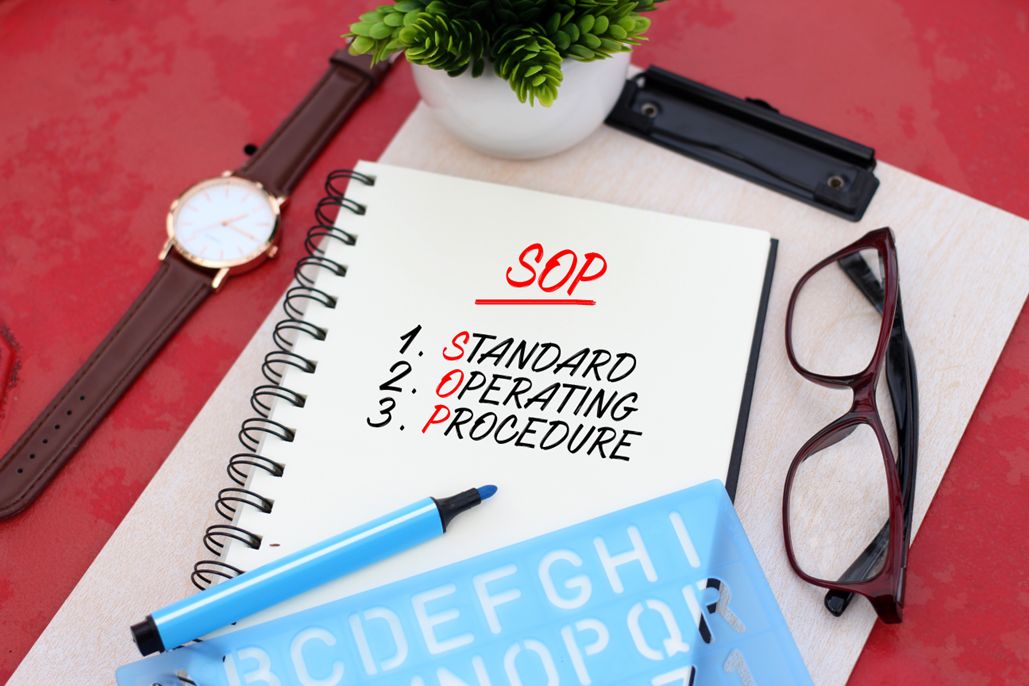Standard Operating Procedures (SOPs) are an essential component of any high-risk industry, from construction and mining to chemical manufacturing and energy production. These procedures ensure that workers perform their duties in a manner that minimizes the likelihood of accidents, injuries, and other negative outcomes.
Developing effective SOPs requires careful planning, thorough understanding of the processes involved, and clear communication with all relevant stakeholders. Let’s discuss the steps to create a clear and effective Standard Operating Procedure.
1. Identify the Scope and Purpose of the SOP
The first step in creating a SOP is to determine its scope and purpose. What tasks or processes does the SOP need to cover? What are the desired outcomes? Consider the risks involved and the ways in which the SOP will mitigate those risks. This information will form the foundation of your SOP and help guide its development.
2. Assemble a Team of Subject Matter Experts
Developing a SOP is a collaborative effort that requires input from various stakeholders, including subject matter experts (SMEs), process owners, and workers who perform the tasks. Assemble a team of individuals with relevant knowledge and experience in the specific process or task being addressed by the SOP. Their expertise will help ensure the SOP is comprehensive, accurate, and effective.
3. Conduct a Task Analysis
Task analysis involves breaking down a process into its component tasks and identifying the sequence of steps required to complete each task. This process allows you to identify potential hazards, points of failure, and areas where safety measures are needed.
To conduct a task analysis, follow these steps:
- Define the process or task in detail, including its purpose and desired outcome.
- Break down the process into smaller, discrete tasks.
- Determine the sequence in which tasks must be performed.
- Identify potential hazards, risks, and points of failure at each stage.
- Determine what safety measures or precautions are needed to mitigate these risks.
Once the task analysis is completed, the instructions can be written for the Standard Operating Procedure.
4. Establish Clear and Concise Instructions
Once you have identified the tasks, sequence, and safety measures, it is time to develop clear, concise instructions for each step. Write the instructions using plain language, avoiding technical jargon or overly complex language. Ensure that each step is easy to understand and follow, particularly for workers who may not be familiar with the process.
In addition to written instructions, consider incorporating visual aids, such as diagrams, flowcharts, or illustrations, to help clarify complex processes or tasks.
5. Define Roles and Responsibilities
Clearly define the roles and responsibilities of all personnel involved in the process or task. This includes specifying who is responsible for each step, who is responsible for overseeing the process, and who has the authority to make decisions related to the SOP.
Defining roles and responsibilities ensures that all workers understand their obligations and helps to promote accountability.
6. Specify Safety Precautions and Personal Protective Equipment
Safety is paramount in high-risk industries, so it is crucial to outline the necessary safety precautions and personal protective equipment (PPE) required for each task. Be specific about the type of PPE needed, such as hard hats, safety goggles, gloves, or respirators, and the circumstances under which they should be used. Include information on proper use, maintenance, and disposal of PPE.
7. Integrate Emergency Procedures and Protocols
Your SOP should also include guidance on how to respond to emergencies or incidents that may occur during the execution of the process or task. This can include:
- Emergency shutdown procedures.
- Evacuation plans and muster points.
- First aid and medical assistance procedures.
- Reporting requirements for incidents or near misses.
Providing clear instructions on how to respond to emergencies will help ensure the safety of workers and minimize the impact of any incidents that may occur.
8. Review and Validate the SOP
Once you have drafted your SOP, it is essential to review and validate its content with the team of subject matter experts, process owners, and workers. This will help identify any gaps, inconsistencies, or inaccuracies that need to be addressed.
During the review process, consider the following questions:
- Are the instructions clear, concise, and easy to understand?
- Are all potential hazards and risks identified and addressed?
- Are the safety precautions and PPE requirements comprehensive and appropriate?
- Are the emergency procedures and protocols suitable for the specific process or task?
Incorporate any necessary changes based on feedback from the review and validation process.
9. Implement Training and Communication
Once the SOP has been finalized, it is crucial to communicate its content to all relevant personnel. This may involve conducting training sessions, workshops, or demonstrations to ensure that workers are familiar with the SOP and understand how to apply it in their daily tasks.
Ensure that the SOP is easily accessible to all workers, either in print or digital format, and consider posting it in visible locations, such as on notice boards or near the relevant workstations.
10. Establish a Review and Update Schedule
SOPs should be considered living documents that require regular review and updates to remain effective. Establish a schedule for reviewing and updating the SOP, taking into account factors such as changes in industry standards, new equipment or technologies, and feedback from workers. This will help ensure that the SOP remains relevant and effective in mitigating risks and promoting safety.
Conclusion
Creating an effective Standard Operating Procedure is a critical task that requires careful planning, collaboration, and attention to detail. By following the steps outlined above, you can develop a SOP that not only minimizes risks but also promotes a culture of safety and accountability in your organization. By regularly reviewing and updating your SOPs, you will ensure that they remain relevant and effective in protecting workers and maintaining a safe working environment.
